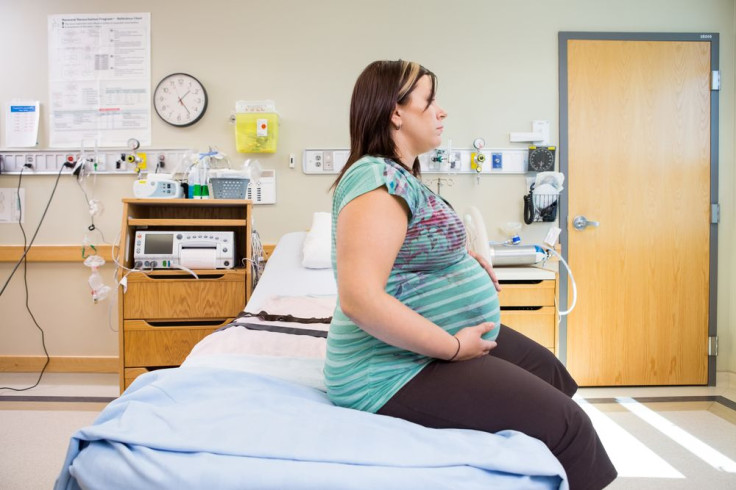Laughing Gas For Pain Relief When Giving Birth Becoming A Popular Option Among New Moms

Laughing gas, although a popular choice of pain relief for women during child birth around the world, has remained nearly exclusive to dental offices in America. Data shows that only one percent of American women use this method of pain relief during labor as compared to 62 percent of British women and 70 percent of New Zealanders. However, doctors working in U.S. hospitals suggest that these figures may already be starting to shift in favor of laughing gas’s use.
Laughing Gas For Labor?
Nitrous oxide mixed with oxygen is known as laughing gas, or gas and air, depending on where in the world you live, and it's widely used as a sedating agent. According to ABC News, it’s widely used in the U.S. by dentists due to its impeccable safety record. Laughing gas fell from popularity in the U.S. in the 1930s when the epidural was introduced, and today the epidural reigns as nearly the only medical pain relief option for American women in labor. In 2011, the Food and Drug Administration approved new laughing gas equipment to be used in American delivery rooms, and this resulted in a resurgence of use in America.
"Maybe 10 years ago, less than five or 10 hospitals used it [for women in labor]," Dr. William Camann, director of obstetric anesthetics at Brigham and Women's Hospital, told ABC News. "Now, probably several hundred. It’s really exploded. Many more hospitals are expressing interest."
Pros of Laughing Gas
One of the biggest pros of laughing gas is its price. Midwife Kerry Dixon told ABC News that she believes laughing gas’s inability to produce adequate revenue for drug companies was part of the reason it fell out of popularity.
"The average cost for a woman opting for nitrous oxide is less than a $100, while an epidural can run up to $3,000 because of extra anesthesia fees," Dixon said.
Dr. Errol Norwitz, chairman of the department of obstetrics and gynecology at Tufts Medical Center, agreed with the theory that laughing gas's lack of profit may be partly behind its absence in American delivery rooms. He explained to The Today Show that its absence in the States may be due to the fact “no companies or influential professional groups” would profit from its greater use.
Along with being cost-effective, laughing gas is regarded as a less extreme pain relief option during labor, when compared to the traditional epidural. It’s recommended for women who opt for a natural delivery but simply need a bit of help along the way.
"It's a relatively mild pain reliever that causes immediate feelings of relaxation and helps relieve anxiety," Camman explained. "It makes you better able to cope with whatever pain you’re having."
According to mothers who have taken the gas, it’s just enough to take the edge off the pain of labor to help them get through the process, The Today Show reported.
Another positive factor is that laughing gas is patient-administered. “I had complete control over when I took breaths and how many breaths to take,” Jenna White, a new mother who used laughing gas when she recently gave birth at Minnesota Birth Center, told WCCO TV.
One of the biggest complaints for women who undergo an epidural is the numbness they experience far after labor. It can take sometimes hours for women to regain complete sensation in the lower half of their body, but with laughing gas the effects wear off nearly as soon as inhalation ceases.
The Cons
Unfortunately, one of the biggest complaints against laughing gas for use during labor is that it is simply not strong enough. Norwitz told The Today Show that for most of the women he’s treated, laughing gas does not provide adequate pain relief.
Also, while the pain relief effects of laughing gas are minor, the chemical can disorient women and change their awareness.
"In delivering over 1,500 babies, I had never used it nor has anyone asked for [nitrous oxide]," Dr. Jennifer Ashton, a practicing OB/GYN told ABC News. "[M]ost moms want to be totally aware when they are in labor."
Laughing gas is also known to have side effects such as nausea, dizziness, and drowsiness. Although these are not experienced by all women who use the gas for pain relief, for those that do, it can taint the birthing experience.
Ultimately, the choice whether or not to use laughing gas is completely up to the mom’s comfort level. She can also opt to have an epidural if she finds she does not like the effects of the gas or feels that it is not providing enough relief from the pain. Unfortunately, at this point many hospitals in America do not even offer laughing gas as an option, but perhaps due to this recent surge in popularity more delivery rooms will become stocked with the pain relief option in time.



























